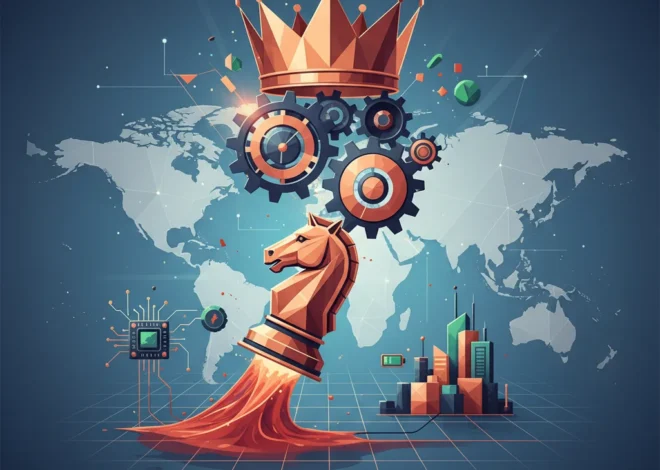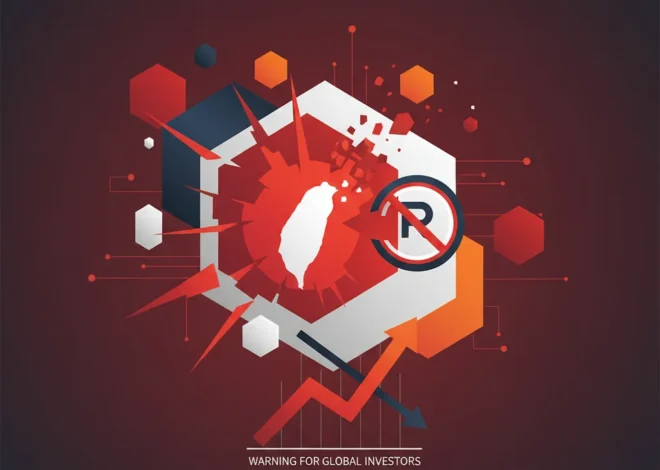
China’s Mineral Chokehold: A Weapon Against the Global Economy or a Self-Inflicted Wound?
In the high-stakes chess game of global economics, a new and powerful piece has been moved. Scott Bessent, a prominent voice in US finance and a key figure in economic policy discussions, recently issued a stark warning. He accused China of deliberately attempting to damage the global economy through its new restrictions on critical mineral exports. According to Bessent, these actions, while intended to exert pressure, will ultimately “hurt their own international standing.” This single statement, reported by the Financial Times, peels back the curtain on a simmering conflict that lies at the intersection of technology, finance, and geopolitics.
The world runs on these obscure but essential materials. From the smartphone in your pocket to the electric vehicle in your driveway and the advanced microchips powering our digital world, critical minerals are the unsung heroes of modern technology. For decades, China has strategically cultivated a near-monopolistic control over the supply of many of these elements. Now, by tightening its grip, Beijing is signaling a new, more assertive phase in its economic rivalry with the West. But is this a masterstroke of economic statecraft, or a strategic blunder that will accelerate the very trends it seeks to counter?
This article delves deep into the implications of China’s mineral export controls. We will explore the economic ripple effects, from the trading floors to the factory floors, analyze the geopolitical motivations, and provide actionable insights for investors, business leaders, and anyone interested in the future of the global economy.
The Bedrock of Modern Technology: Understanding Critical Minerals
Before we can analyze the impact, it’s crucial to understand what’s at stake. “Critical minerals” are not just another commodity. They are a group of metallic and non-metallic elements essential for the functioning of modern technologies, economies, and national security, but whose supply chains are vulnerable to disruption. China’s dominance in this sector is not accidental; it’s the result of decades of focused industrial policy, state-backed investment, and, at times, laxer environmental regulations that gave it a significant cost advantage.
The recent export controls, which require special licenses for exporting materials like gallium and germanium, have sent shockwaves through industries reliant on them. These aren’t household names, but their importance cannot be overstated. Gallium is a key component in advanced semiconductors, 5G base stations, and military-grade radar systems. Germanium is vital for fiber optics and infrared technology used in night vision and satellite imagery. By controlling the spigot for these materials, Beijing holds direct leverage over some of the most sensitive and strategic sectors of the global economy.
To put China’s market position into perspective, consider the following breakdown of key minerals and their applications.
| Critical Mineral | Primary Uses in Technology | China’s Estimated Share of Global Production/Processing |
|---|---|---|
| Gallium | Semiconductors, 5G equipment, LEDs, military radar | ~98% (source) |
| Germanium | Fiber optics, infrared optics, solar cells, satellites | ~68% |
| Graphite (processed) | EV battery anodes, lubricants, nuclear reactors | ~70% |
| Rare Earth Elements (processed) | EV motors, wind turbines, consumer electronics, defense systems | ~90% (source) |
This dominance provides China with a powerful lever. The restrictions are widely seen as a retaliatory measure against Western, particularly US, sanctions aimed at kneecapping China’s own high-tech ambitions, especially in the semiconductor industry. It’s a clear message: if you restrict our access to high-end chips, we can restrict your access to the raw materials needed to make them.
Geopolitical Fallout and the Weaponization of Supply Chains
Scott Bessent’s accusation that China is trying to “damage the global economy” points to a broader, more alarming trend: the weaponization of economic interdependence. For decades, the prevailing theory of globalization was that deep economic ties would foster peace and stability. The current situation challenges that assumption. Today, intricate supply chains are no longer just pathways for efficiency and profit; they are battlegrounds for geopolitical influence.
This move is a classic example of geoeconomics, where a state uses economic instruments to achieve geopolitical goals. By implementing these controls, China achieves several objectives simultaneously:
- Retaliation: It serves as a direct, tit-for-tat response to US tech restrictions.
- Deterrence: It acts as a warning to other nations considering similar technology sanctions.
- Strategic Advantage: It creates uncertainty and raises costs for Western competitors, potentially slowing their technological progress in key areas like green energy and defense.
However, this strategy carries significant risks for China, validating Bessent’s point about damaging its own standing. By demonstrating a willingness to disrupt supply chains for political reasons, Beijing undermines its credibility as a reliable global supplier. This move forces international companies and governments to ask a critical question: can we afford to be this dependent on a single source? The answer, increasingly, is no. This realization is accelerating a global push towards supply chain diversification, a trend often referred to as “de-risking” or “friend-shoring.”
The Ripple Effect: From Stock Market Jitters to Boardroom Recalculations
The immediate effects of China’s announcement were felt on the stock market. Shares of companies heavily reliant on gallium and germanium experienced volatility. Semiconductor manufacturers, EV companies, and defense contractors all saw their risk profiles re-evaluated overnight. This highlights a new and crucial factor for modern investing: geopolitical risk is no longer a peripheral concern but a central driver of market behavior.
Beyond the market, the real-world consequences are profound:
- Rising Costs and Inflation: Scarcity, whether real or anticipated, drives up prices. Companies will have to pay more for these essential minerals, a cost that will eventually be passed on to consumers, adding to inflationary pressures.
- Production Delays: Without a steady supply of these materials, production lines for everything from cars to solar panels could face delays, impacting corporate revenues and economic growth.
- A Scramble for Alternatives: The race is on to secure new sources. This involves investing in new mines in countries like Australia, Canada, and the United States, as well as pouring capital into recycling technologies and R&D for substitute materials.
This scramble is already underway. The US and its allies are actively coordinating to build alternative supply chains. Initiatives like the EU’s Critical Raw Materials Act and investments spurred by the US Inflation Reduction Act are designed specifically to reduce dependence on China. This represents a fundamental rewiring of the global industrial and finance landscape.
Navigating the New Reality: A Guide for Investors and Leaders
This new era of geoeconomic competition demands a new playbook. Complacency is no longer an option for business leaders or investors.
For Investors:
The challenge is to look beyond quarterly earnings and assess a company’s geopolitical resilience. Key considerations include:
- Supply Chain Audits: Scrutinize a company’s dependence on single-source countries, particularly for critical components. Companies with diversified, transparent supply chains command a premium.
- Emerging Opportunities: The “de-risking” trend creates new investment avenues. This includes mining companies operating in allied nations, firms specializing in advanced materials recycling, and R&D-heavy companies developing next-generation technologies that use more abundant materials.
- Commodities and ETFs: While direct trading in critical minerals can be volatile, exchange-traded funds (ETFs) focused on rare earth elements or the green energy transition offer a way to gain exposure to the broader trend.
For Business Leaders:
The focus must shift from pure cost optimization to building robust and resilient operations. Strategic imperatives now include:
- Diversification and Redundancy: Actively seek out and cultivate suppliers in different geographic regions. This may increase costs but acts as a vital insurance policy against disruption.
- Investment in Innovation: Allocate resources to R&D aimed at reducing reliance on specific critical minerals. This could involve designing products with alternative materials or pioneering new recycling methods.
- Strategic Partnerships: Collaborate with governments and industry peers to build resilient supply ecosystems. The necessary investments in mining and processing are often too large for a single company to bear, requiring public-private partnerships facilitated by modern banking and finance solutions.
Conclusion: A High-Stakes Gamble
Scott Bessent’s accusation frames China’s actions as an aggressive move to disrupt the global order. While the immediate goal may be to inflict economic pain and gain leverage, the long-term consequences are far more complex. China is betting that the world’s dependence on its minerals is too deep to overcome quickly. The West is betting that innovation, investment, and international cooperation can build a viable alternative.
This is a high-stakes gamble that could indeed backfire on Beijing. By wielding its mineral dominance as a weapon, China is forcing the world to treat it not as a reliable partner, but as a strategic risk to be managed and mitigated. This will inevitably diminish its central role in global supply chains and, as Bessent noted, damage its international standing. The global economy has entered a volatile and unpredictable new chapter, where the principles of economics are increasingly intertwined with the hard realities of geopolitics.


